TLDR:
“Top 5 Preventative Upgrades to Protect Your Home from Water Damage in San Diego focus on practical solutions such as water damage prevention products and flood-resistant home materials to address common issues like hard water problems, scale buildup, and low pressure. Gold Coast Flood Restorations recommends these home upgrades for water protection to help prevent appliance damage and provide effective water damage protection in 2025.”
—
Understanding San Diego’s Hard Water Problem
San Diego has a big problem with hard water. It contains high mineral content that causes scale buildup in pipes and appliances. This buildup can lower their efficiency and shorten their lifespan. You need to address this to keep your home’s plumbing working well.
High Mineral Content and its Implications
Hard water has lots of calcium and magnesium. These minerals build up tough mineral deposits called scale. This scale clogs pipes and makes soaps less effective. That means cleaning gets harder.
The Science of Hard Water Scale Buildup
Scale forms when hard water dries up, leaving minerals stuck on surfaces. To reduce scale:
- Use vinegar or special descaling products to clean fixtures.
- Install a water softener to remove calcium and magnesium before water flows through pipes.
Hard Water’s Impact on Appliances and Fixtures
Hard water can damage appliances like dishwashers and washing machines. Scale buildup lowers appliance efficiency. That can cause higher energy bills or break appliances sooner. To protect them:
- Clean appliances with suitable cleaners regularly.
- Use filters made for hard water protection.
Low Water Pressure from Hard Water: Causes and Consequences
Hard water often leads to low water pressure. Scale inside pipes narrows the flow, making showers weak or sinks slow to fill.
Hard Water Plumbing Issues: Pipe Scaling and Corrosion
Minerals in hard water also cause pipe corrosion. Corrosion can make leaks or bursts happen if you ignore it. To prevent problems:
- Have experts check your plumbing often.
- Apply protective coatings on pipes where possible.
Improving Water Quality for Healthier Homes
Fixing your home’s water quality improves your family’s health. Using proper treatment works well with local water issues.
Hard Water’s Effects on Health and Wellbeing
Many don’t realize that hard water can cause skin irritation or dryness. Soap leaves residue behind since it doesn’t rinse off easily in high-mineral water.
Water Softener Installation: A Comprehensive Guide
A water softener installation helps reduce hardness and improve life at home:
- Pick salt-based or salt-free softeners based on what you prefer.
- Follow instructions carefully or hire pros if unsure.
- Enjoy softer skin after showers and protect your appliances longer!
Water Filtration Options for San Diego Homes
If you want cleaner water beyond softness:
- Use whole-house filtration systems that clean all taps. This keeps your drinking water safe everywhere in the house.
By knowing these things about San Diego’s hard water, homeowners can better protect their homes and health here in sunny California!
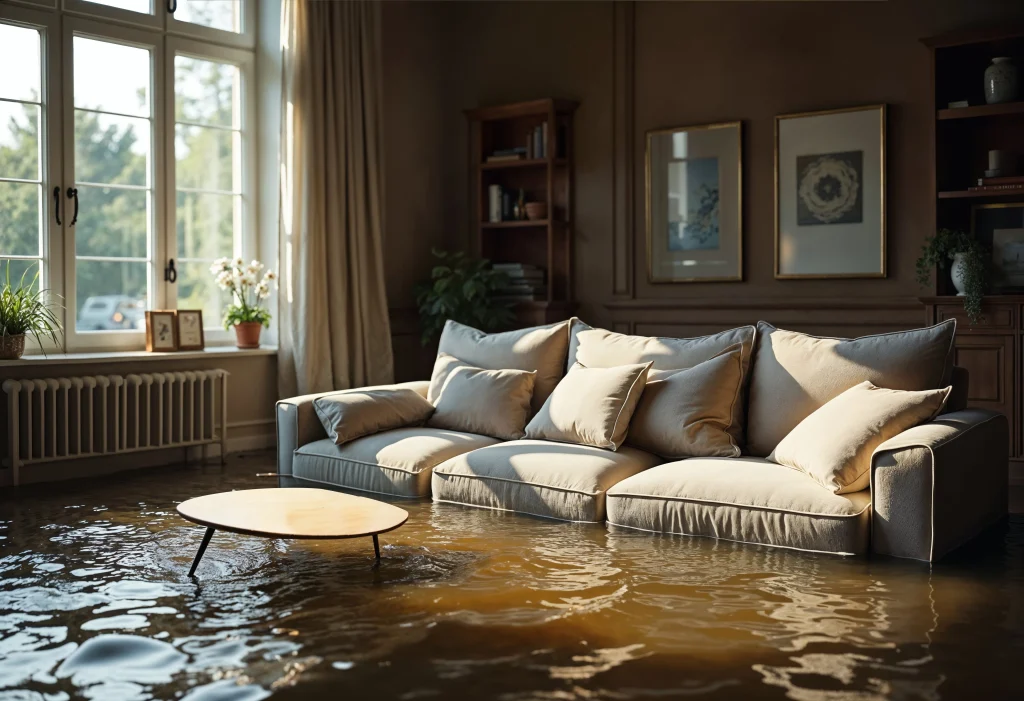
Effective Hard Water Removal Strategies
Hard water has lots of calcium and magnesium in it. These minerals build up over time on pipes, appliances, and faucets. This tough scale slows down water flow, harms surfaces, and raises your energy bills.
Home Remedies for Hard Water Cleaning
You can use simple things like vinegar or lemon juice to get rid of lime scale. These natural acids break down mineral deposits when you apply them often to faucets or showerheads. Baking soda mixed with water works well too. It scrubs off residue without needing harsh chemicals.
Professional Solutions for Mineral Buildup
If the hard water damage is bad, pros use special descaling stuff. It breaks down calcium and magnesium deposits safely. Doing this regularly stops corrosion inside pipes and helps appliances like water heaters last longer.
Mixing home fixes with expert help keeps your home safe from hard water damage. It also cuts down on costly repairs from scale buildup.
Preventing Hard Water Damage: Proactive Steps
You want to spot hard water problems early before they get worse. Look for white crusty stains around taps or slow drains—these show mineral buildup.
Keep your pipes clean by flushing them once a year to clear out dirt and sediment. Check your plumbing now and then for signs of trouble. Use corrosion control products to stop metal parts from rusting due to mineral-rich water.
For long-term protection, keep a regular care routine going. Pair this with the right treatment options made for homes in San Diego where hard water is common.
Expert Hard Water Solutions for San Diego Homes
Water Softener Installation
Water softeners swap out calcium and magnesium ions with sodium or potassium ones. They use ion exchange technology to stop scale from forming inside your plumbing. This makes appliances work better and last longer.
Alternative Water Filtration Systems
Besides softeners, you can try other filters that target minerals causing hardness problems. Reverse osmosis filters remove dissolved solids at a tiny molecular level. Carbon filters help too—they take out chlorine and improve the taste while cutting down on hardness effects.
Household Water Treatment Benefits
A full home treatment system gives you cleaner, softer water that’s easier on your skin. It also stops soap scum from sticking to surfaces, making chores simpler. Plus, it guards your home against damage from hard minerals over time.
Why Choose Professional Hard Water Treatment Services?
Pros test how hard your water really is using tools you don’t find in DIY kits. They figure out exactly what your home needs instead of guessing.
Experts install everything right so it works well and won’t mess up any warranties on your equipment. They offer ongoing support too—like maintenance plans that keep systems running smooth all year long. This saves money by avoiding big repairs caused by untreated hard water damage in San Diego homes.
Flood-Resistant Home Upgrades
Protecting your home from water damage means making some smart flood-resistant upgrades. These changes help keep water out, reduce flood risk, and protect your property’s structure. Using flood-resistant materials and good designs can make your home stronger when heavy rains or floods happen.
Understanding Flood Resistance
Flood resistance means building or fixing a house so it can handle floods without big damage. It helps cut down the chance of costly repairs by keeping water from getting inside and stopping serious harm to walls or floors. Adding flood resistance keeps your home safe and solid for you and your family.
Essential Flood-Resistant Materials
Picking the right materials is important for flood-proof home improvements:
- Concrete and Reinforced Concrete: Reinforced concrete stands up to water pressure better than regular concrete. It is strong and doesn’t crack easily, so it’s great for foundations or walls that might get wet.
- Steel Framing: Steel framing stays strong even when wet. It won’t rot or bend like wood does when it gets soaked.
- Flood-Resistant Insulation: Spray foam insulation blocks water well and keeps heat in. If it does get wet, it dries fast, which helps stop mold from growing.
- Water-Resistant Windows and Doors: Impact-resistant windows can stop floodwaters with debris from coming in. They also seal tight to keep leaks out.
Design Considerations for Flood Resistance
Good design choices help prevent flood damage too:
- Elevated Foundations: Raising the house foundation above likely flood levels keeps living spaces dry during floods.
- Sloped Landscaping: Sloping the land away from your home sends rainwater downhill, so it won’t pool near the foundation.
- Flood Vents: Flood vents let water flow out from crawlspaces or basements quickly. This stops pressure from building up that could crack walls.
Using these materials along with smart design helps keep your home safe. It’s a solid way to protect against flooding and save your property from water damage.
Upgrade #1: Plumbing Inspection and Maintenance
You should check your plumbing regularly to stop water damage before it starts. A home plumbing inspection finds leaks, corrosion, or broken pipes early. Fixing these problems fast can save you a lot of money.
Water pressure problems can cause pipes to burst or leak. Water pressure regulators help keep flow steady and protect pipes. Also, pipe insulation stops pipes from cracking or rusting because of temperature changes.
Make sure to look for damage often. Repair parts right away. Test emergency water shutoff valves so they work when you need them. These steps help stop corrosion and avoid sudden floods.
Identifying and Addressing Pipe Issues
Stopping leaks early is really important. Professionals use special tools to find leaks or weak spots in pipes that you might not see. It’s good to have emergency shutoff valves installed where you can reach them fast.
To control corrosion, treat metal pipes with protective coatings. Or better yet, replace old pipes with PVC or PEX ones that don’t rust. This helps pipes last longer and lowers the chance of sudden breaks that cause water damage.
Improving Water Pressure and Flow
Better water pressure makes your home more comfortable and safe. Water pressure regulators keep flow steady and stop spikes that burst pipes.
Balanced water flow also means appliances face less wear. This stops breakdowns caused by changing pressure, so your stuff lasts longer.
Upgrade #2: Water Softener Installation
Hard water has minerals like calcium and magnesium that build up inside pipes and appliances. This scale buildup can cause damage over time. Installing a water softener removes those minerals using ion exchange—kind of like professional lime scale cleaning.
This upgrade cuts hard water damage a lot and keeps your plumbing healthier overall.
Benefits of Water Softeners
- Stop mineral deposits to keep appliances running well.
- Make dishwashers, washers, heaters last longer.
- Give safer drinking water without harsh minerals.
- Cut down skin irritation from hard minerals.
- Use less detergent thanks to softer water, which is better for the planet.
These benefits protect your home long term and save money on repairs linked to hard water.
Choosing the Right System
Start by testing your home’s hardness with simple kits you can buy online or at stores. Pick models made for how big your family is, so they work well without wasting energy or water.
Upgrade #3: Whole-Home Water Filtration
Whole-house filtration improves water quality by getting rid of sediments, chlorine, bacteria risks, and other impurities that cause buildup inside pipes.
Filtering the water before it reaches taps and appliances keeps flows cleaner. This helps avoid clogs better than chemical treatments alone.
Removing Contaminants
Cutting exposure to harmful pathogens lowers illness risks from dirty water sources—even if municipal supplies try to be clean, sometimes problems slip through.
Selecting the Appropriate System
Getting a pro’s advice helps you pick filters made for local water issues like pH levels or chemicals present. This saves money by avoiding features you don’t need while making sure the system works well for your home.
Upgrade #4: Roof and Gutter Maintenance
Cleaning gutters stops blockages that cause overflow onto walls or foundations. That overflow brings moisture inside and damages structure inside and out. Damp places lead to mold which causes breathing problems for kids and older people especially if they spend a lot of time indoors.
Roof inspections catch small leaks early so you can fix them fast before big expensive repairs are needed later. It’s best to check roofs in spring and fall when weather changes make leaks more likely. Rainstorms, snow melts, and leaves all add up to clogged gutters that stress roofs too much and wear them down faster.
To improve drainage, add moisture barriers or waterproof membranes under shingles at spots where leaks happen most. These keep moisture out while safely directing runoff away from your home’s foundation keeping things dry inside.
Flood vents, sump pumps, French drains, or exterior drainage help move extra water away during heavy rains or floods so it doesn’t pool near your house causing damage over time.
Upgrade #5: Appliance Maintenance and Upgrades
Keeping appliances in good shape improves their efficiency and stops water damage in your home. Regular checks catch problems before they get costly.
Removing scale buildup from appliances using lime scale cleaning methods helps them work better longer without breaking down due to hard water deposits.
Choosing durable appliances made from flood-resistant materials gives extra protection against damage from leaks or floods around the house.
Taking care of appliances this way saves money on repairs and replacements while helping everything last much longer overall.
Implementing the Upgrades to Prevent Water Damage
Cost Considerations and Budgeting
Planning your budget helps a lot when you want to stop water damage. Prices change based on materials, work size, and contractor fees. It’s good to guess costs early so you don’t get surprised.
Make a list of all upgrades you want. Then check average prices for materials and labor in San Diego. Keep an extra 10-20% just in case something unexpected pops up during the work. Many folks say budgeting this way helps them pick the most needed upgrades without spending too much.
Estimated Costs for Each Upgrade
Repair costs can be very different:
- Water-resistant siding or paint: $1,000–$3,500
- Improved drainage systems: $2,000–$5,000
- Sealing foundation cracks: $500–$2,500
- Installing sump pumps or backflow valves: $1,200–$4,000
Contractor fees usually add 20%-40% more than material costs because they bring skill and time. Picking good renovation materials first means you avoid expensive repairs from water damage later.
Financing Options and Incentives
You can find ways to pay for these upgrades:
- Home improvement loans with low rates
- Credit lines made for home fixes
- Insurance claims if old water damage fits
See if San Diego or state programs give rebates or help with water protection products. Also check your home insurance—some pay part of flood protection costs when you file a claim.
Finding Reliable Contractors in San Diego
Hiring pros who know waterproofing is important. Look for those with good reviews from people nearby.
Make sure contractors have licenses and insurance before you hire them in San Diego. Ask about their work on projects like drainage or water-proof materials that match our local weather problems.
Vetting and Hiring Experienced Professionals
Get a full professional checkup before starting work. This finds hidden issues like weak foundations or bad ground slopes around your house.
Pick contractors who give clear quotes with all costs shown—this stops surprise bills later. Check if they offer warranties on their work so you’re covered if problems happen after installation.
Ensuring Quality Workmanship and Warranty Coverage
Good workmanship matters for long-term water resistance. Choose contractors who promise their work with at least a one-year warranty on parts and labor.
Ask what upkeep is needed after the upgrade to keep things working well over time. Proper installation plus solid warranties means less worry about costly repairs later on.
Preparing Your Home for the Upgrades
- Do a home checklist (clean gutters, trim trees)
- Move valuables out of work zones
- Tell family members the schedule
Getting ready helps avoid delays once contractors show up. It also protects your stuff from damage while fixing water problems around your home.
Scheduling and Coordination
Work out timing with your contractor so it fits your daily life. Leave enough gaps between tasks like digging outside and sealing walls indoors.
Try scheduling upgrades during dry times; this cuts down weather delays common here in San Diego’s coast area.
Clear talks help keep things running smooth so you can protect your home against water damage without extra stress.
Minimizing Disruption During Upgrades
To make things easier:
- Plan places to stay if big plumbing changes happen
- Use dust blockers inside if they do indoor waterproofing
- Do noisy outdoor jobs only in daytime
These tips keep your home comfy while building strong defenses against leaks or floods.
Knowing costs well—and working with trusted pros—lets you do these upgrades with confidence. You’ll guard your San Diego house from costly water damage now and later on.
Maintaining a Water-Damage-Resistant Home
Ongoing Maintenance and Monitoring
Regular maintenance keeps your home safe from water damage. Clean gutters, downspouts, and drains so water flows away from your foundation. Use a home maintenance checklist to track tasks like checking seals around windows and doors or clearing roof valleys.
Spotting leaks early saves big money on repairs. Water leak detection systems alert you right away if pipes start to leak. Keep up with plumbing maintenance to find old pipes or broken fixtures before they cause trouble.
A professional assessment once a year can catch risks you might miss. These checkups help keep your home’s water protection strong over time.
Regular Inspections and Preventative Checks
Preventative upgrades work only if you check on them often. Do regular inspections for signs of moisture, mold, or damaged parts that let water in.
Act fast when you see small problems like loose fittings or cracked caulking. Fixing them now stops bigger repairs later. A home inspection should focus on basements, crawl spaces, and attics where leaks hide well.
Keep an eye on things so your upgrades keep blocking water from entering your home.
Addressing Issues Promptly
Waiting to fix leaks raises repair costs and damage risk. Repair leaks fast to stop harm to the structure, mold growth, or electrical problems.
If you notice water stains, musty smells, or warped floors—call a pro quick. Acting early saves your home and keeps repair bills low.
Protecting Your Investment
Preventing water damage protects more than just walls. It keeps your home’s value safe over time.
Using long-term protection plans helps stop wear on foundations, wood frames, and finishes caused by moisture.
By keeping your home dry with regular care and smart fixes, you protect the value built over years of work and money spent.
Ensuring Long-Term Effectiveness
Sustainable fixes defend against water damage without needing frequent repairs or replacements. Pick tough materials made to resist moisture when upgrading wet-prone parts of your house.
Combine these with regular upkeep like clearing clogged drains or fixing old pipes. This mix lowers risks and keeps protection strong year after year.
Adapting to Changes in San Diego’s Water Quality and Climate
San Diego’s climate changes how homes deal with water problems. Droughts lower groundwater but raise mineral levels that cause pipes to rust faster. Homeowners need to watch plumbing carefully during these dry times.
Seasonal rains bring heavy downpours too. Good drainage systems must handle big runoff loads and keep water away from buildings safely.
Adjusting your prevention steps for local climate shifts keeps your home’s defenses working despite San Diego’s changing weather now and later.
—
For more advice made just for San Diego homeowners who want to avoid costly water damage issues, check out Gold Coast Flood Restorations’ blog series on top preventative upgrades today!
FAQs:
What are the best water damage prevention products for homes in San Diego?
Products like moisture barriers, sump pumps, and water leak detectors help block moisture and prevent leaks effectively.
How often should I schedule home plumbing inspection to avoid water damage?
A yearly inspection helps find leaks, corrosion, or pipe damage early to maintain plumbing integrity.
Can smart home water sensors help with water damage control?
Yes, these sensors detect leaks quickly and alert you to stop damage before it worsens.
What role do emergency water shutoff valves play in water damage repair prevention?
They allow quick water cut-off during emergencies to minimize flooding and structural harm.
How does pipe insulation contribute to water damage mitigation strategies?
It prevents pipes from freezing, cracking, or corroding, reducing leak risks in colder months.
Are flood vents necessary for flood-proof home improvements?
Yes, they release pressure from floodwaters in basements or crawlspaces to protect walls and foundation.
What maintenance tips help with gutter guards and roof inspection for leaks?
Clean gutters and inspect roofs twice a year to ensure proper drainage and avoid moisture intrusion.
How can foundation sealing improve structural water damage protection?
Sealing cracks stops water entry that can cause mold, rot, or foundation weakening.
Essential Water Damage Prevention Upgrades for San Diego Homes
- Install sump pumps for efficient water removal in basements.
- Use moisture barriers under flooring to block ground moisture.
- Apply waterproof membranes on exterior walls to prevent leaks.
- Add backflow prevention devices to avoid sewage backup.
- Implement French drains for better stormwater management.
- Upgrade to impact-resistant windows to resist flood debris.
- Choose reinforced concrete or steel framing for durable structures.
- Use spray foam insulation in wet-prone areas for mold prevention.
- Employ landscape grading techniques that slope away from foundations.
- Set up flood sensors linked to home security systems.
Plumbing and Water Quality Control Solutions
- Perform routine plumbing maintenance focusing on corrosion control.
- Install water pressure regulators to prevent pipe bursts.
- Use epoxy coatings inside pipes to maintain integrity and reduce rust.
- Test home water hardness with kits and treat accordingly.
- Choose eco-conscious home upgrades like salt-free conditioners.
Home Preparedness and Insurance Considerations
- Review your insurance coverage for flood and water damage claims.
- Create an emergency preparedness plan including shutoff locations.
- Schedule professional home inspections before rainy seasons.
By following these preventative upgrades and maintenance tips from Gold Coast Flood Restorations, San Diego homeowners can safeguard their properties against costly water damage effectively.

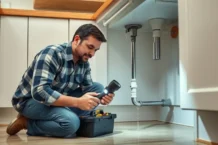
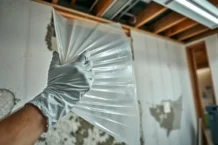

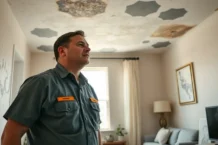
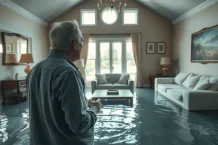
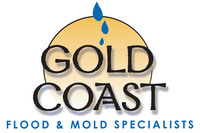


Follow Us!